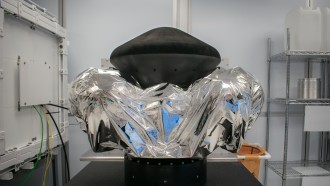Mexico City has found a way to tackle with the escalating problem of smog and air pollution: a stricter car ban from April 5 to June 30. However, past studies and policies have shown that it might not work.
In the city of 20 million, considered one of the worst polluted in the world by the United Nations, the previous measure is to ban vehicles on the road on certain days of the week, unless they present an exempt sticker, which shows the car has undergone testing for smog and obtained a low emission score.
The new car ban, announced by the country’s environmental commission, covers even sticker-carrying vehicles once a week and a Saturday every month. It will prevail until late June or the start of the rainy season.
Added measures include policy changes that will potentially lower the maximum pollution level, as air contaminants are believed to continue accumulating during the dry season.
However, is the new “no circulation” policy limiting the number of cars on the road bound to work or fail?
Mexico City has implemented similar laws in place since the 1980s, all deemed by experts as a failure. Moreover, previous studies have already taken a look at why ordering cars off the road are not guaranteed to work.
Lucas Davis, an energy researcher at the University of California Berkeley who has analyzed the city’s similar attempts in the past, found that these programs actually increased air pollution in the long term.
One reason is the hassle factor: people are forced to take public transportation more often, which is slow, inconvenient, and a not-so-tempting prospect given the city buses’ reputation of being dangerous. So what they do is to find other ways to ride cars: investing in second family cars with a different license plate number, taking taxis, or booking an Uber or Lyft service.
“I just think that once people become drivers in Mexico City they don’t go back,” says Davis. He adds that the inconvenience could reach more than $300 million a year or $130 for every vehicle owner.
While the current “no circulation” rule, too, addressed some loopholes in preceding ones through technology, the city has to get to a point where it is politically ready, added Davis.
Just two weeks ago, Mexico City announced emergency ozone status after it suffered the highest air pollution levels since the 1980s. The World Air Quality Index has also identified parts of the city with unhealthy air quality, which can lead to health consequences comprising a range of respiratory conditions.
In 2010, studies highlighted savings of more than $760 million annually through slashing pollution by a mere 10 percent. These gains include preventing about 33,000 emergency room cases due to respiratory disease.









